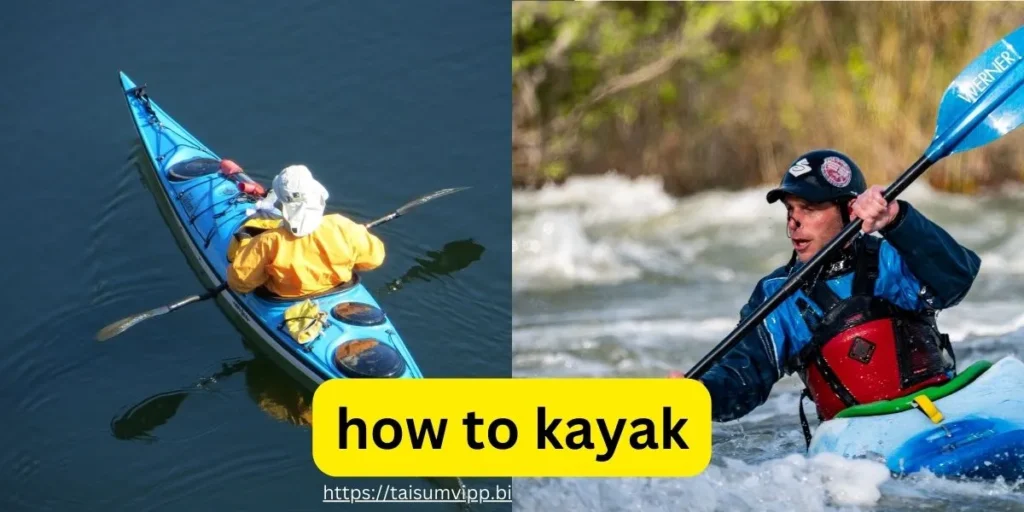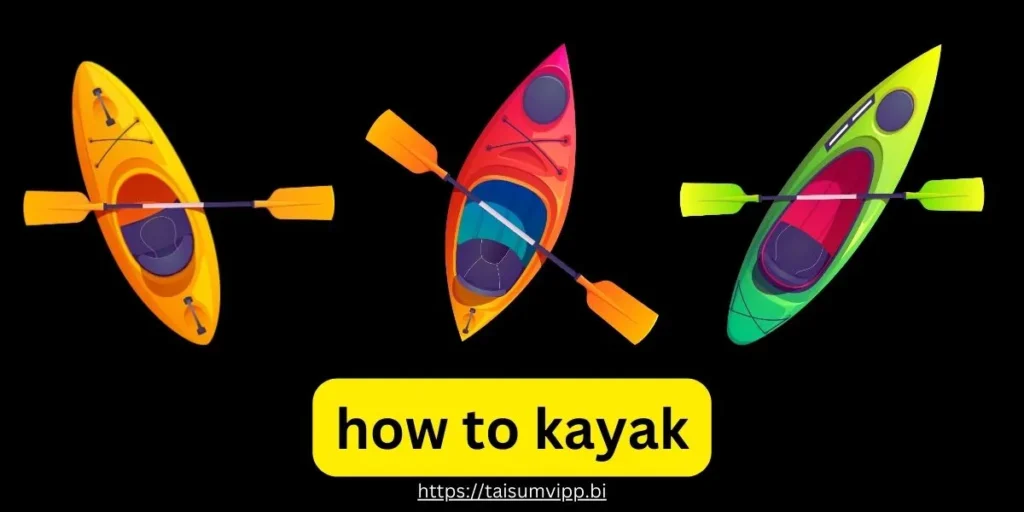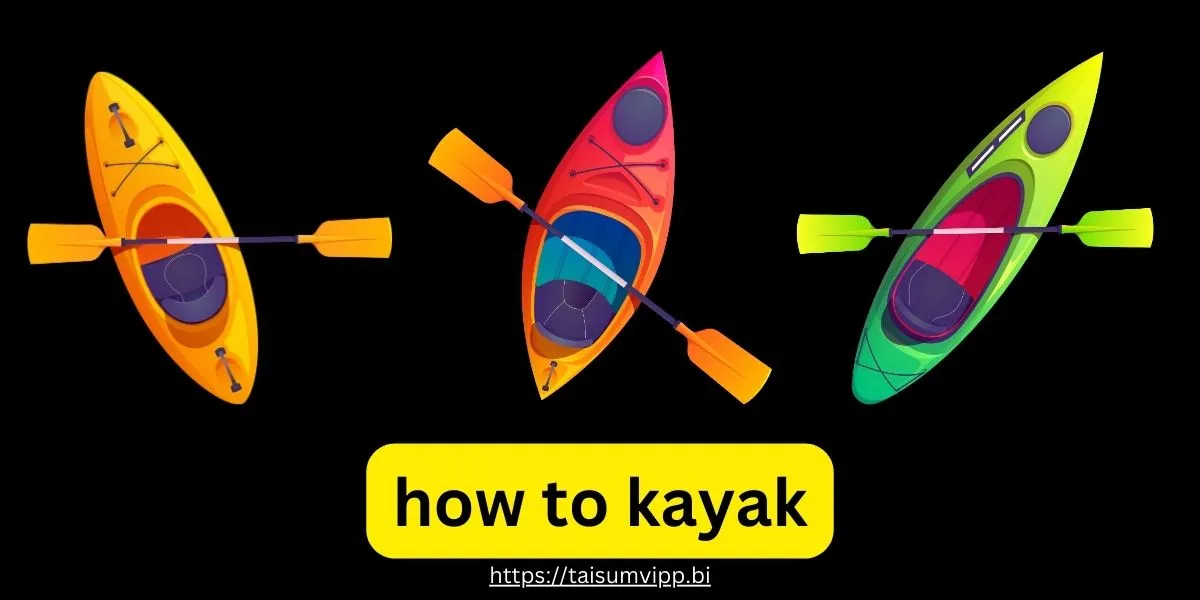Are you interested in learning how to kayak? Kayaking is a thrilling sport that allows you to explore serene lakes, navigate rivers, and even venture into the vast ocean. Whether you are a beginner or have some experience, this article will provide you with valuable tips and information to enhance your kayaking skills. So let’s dive in and discover the wonderful world of kayaking!
How to Kayak for Beginners
If you are new to kayaking, it is essential to start with the basics. Here are a few steps to help you get started:
- First, make sure you have the right kayak. There are different types of kayaks designed for various activities such as recreational kayaking, touring, or whitewater kayaking. Choose one that suits your needs and skill level.
- Next, learn the proper technique for paddling. Sit in the kayak with your back straight and feet placed comfortably on the footrests. Hold the paddle with a relaxed grip, ensuring your hands are shoulder-width apart. Use your torso to generate power while paddling, rather than solely relying on your arms.

- Practice your balance and stability by starting in calm waters. Gradually increase the difficulty level by kayaking in slightly rougher conditions as you gain confidence.
- Always wear a personal flotation device (PFD) or life jacket while kayaking. Safety should be your top priority, especially as a beginner.
- Lastly, consider taking a kayaking lesson or joining a guided tour to learn techniques, safety measures, and gain experience from professionals.
Remember, patience is key when learning how to kayak. With practice, you will steadily improve your skills and become more comfortable on the water.
How to Kayak in the Ocean
Kayaking in the ocean offers a whole new level of excitement. However, it is essential to be aware of the unique challenges and safety precautions ocean kayaking entails. Here are some tips to kayak safely in the ocean:
- Check the weather conditions and tides before heading out. Avoid kayaking in rough seas, strong currents, or during stormy weather.
- Wear appropriate protective gear, including a wetsuit or drysuit, sun hat, and sunscreen.
- Practice navigating waves by approaching them at an angle to minimize the chance of capsizing. It is vital to keep a low center of gravity and maintain balance.
- Stay vigilant and be aware of other marine vessels, such as boats or surfers. Keep a safe distance to avoid any collisions.
- Consider joining a guided ocean kayaking tour if you are a beginner. Experienced guides can provide valuable insights and ensure your safety.
With proper preparation and knowledge, ocean kayaking can provide an incredible adventure and an opportunity to discover stunning coastal landscapes.
How to Kayak Faster
Are you looking to increase your speed while kayaking? Here are a few techniques to help you paddle faster:
- Focus on using your core muscles for power rather than relying solely on your arms. Engaging your torso in paddling movements will provide more strength and endurance.
- Ensure your paddle stroke is efficient. Dip the paddle blade fully into the water and pull it back along the side of the kayak in a straight line. A proper stroke will maximize your speed and reduce energy wastage.
- Experiment with different kayak designs. Longer and narrower kayaks are generally faster, but they require more skill to control. Test different models to find one that suits your ability and speed requirements.
- Improve your physical fitness. Regular exercise, particularly targeting your core and upper body strength, will enhance your kayaking performance.
- Practice paddling drills, such as interval training, to build speed and endurance. Mixing high-intensity bursts with recovery periods will help you develop faster paddling techniques.
Keep in mind that speed should never compromise safety. Always paddle within your abilities and consider the conditions of the water and weather before attempting to kayak at high speeds.
How to Attach Kayak Seat
Having a comfortable kayak seat is crucial for an enjoyable paddling experience. Here are some steps to help you attach a kayak seat:
- Start by positioning the seat in the desired location on your kayak. Most kayaks have designated points to secure the seat.
- Ensure that the seat is aligned with the center of the kayak and adjusted to provide proper back support.
- Using straps or buckles provided with the kayak seat, secure it to the seat attachment points on the kayak.
- Double-check the seat attachment to ensure it is securely fastened and won’t move or shift during your kayaking adventure.
- Adjust the seat position to find the optimal comfort level for your paddling style. Experiment with different angles and backrest positions to achieve the best fit.
Remember that the comfort and support of your kayak seat can greatly impact your overall kayaking experience. Take the time to attach it properly for maximum enjoyment on the water.
How to Buy a Kayak
Ready to purchase your own kayak? Here are some essential considerations when buying a kayak:
- Determine your kayak’s intended use. Are you planning to use it for recreational purposes, fishing, touring, or whitewater kayaking? This will help narrow down your options.
- Consider the kayak’s size and weight. Ensure that it is compatible with your physical abilities and transportation capabilities. Smaller kayaks are generally easier to maneuver, while longer ones offer better tracking and stability.
- Check the seating comfort and adjustability. Sit inside the kayak to assess how it feels and supports your body.
- Research kayak materials. You can choose from plastic, fiberglass, or even inflatable options. Each material has its advantages and disadvantages in terms of durability, weight, and price.
- Read reviews and seek recommendations from experienced kayakers. Their insights can provide valuable information about the brand and model you are interested in.
- Establish your budget and compare prices across different retailers. Remember to include additional costs, such as paddles, life jackets, and other necessary accessories.
Buying a kayak is an investment in your enjoyment of the sport. Take your time to research and choose the one that suits your needs and preferences.
How to Build a Kayak
If you have a knack for DIY projects, building your own kayak can be a rewarding experience. Here are some general steps to get you started:
- Acquire a kayak building kit or gather the necessary materials, including marine-grade plywood, epoxy resin, fiberglass cloth, and other accessories.
- Follow the instructions provided with the building kit or seek detailed plans from reputable sources.
- Start by assembling the kayak’s frame, ensuring all components fit together securely.
- Apply epoxy resin and layer fiberglass cloth over the frame to create a strong and durable shell.
- Sand and smooth any rough edges to provide a sleek and comfortable finish.
- Add finishing touches such as a cockpit, seat, and decklines according to your preferences.
Please note that building a kayak requires woodworking skills and dedication. It is recommended to seek professional advice or join kayak-building workshops if you are new to this process.
How to Carry a Kayak by Yourself
Transporting your kayak safely and efficiently is essential, especially if you frequently paddle alone. Here are some techniques to help you carry a kayak by yourself:
- Start by positioning the kayak next to your vehicle or starting point. Ensure the kayak is balanced and level.
- Kneel down next to the kayak, facing toward it.
- Place one hand on each side of the kayak, approximately shoulder-width apart.
- Using your legs as the main source of power, lift the kayak by slowly straightening your legs and pushing up.
- Once in an upright position, move closer to the center of the kayak, supporting the weight evenly.
- Rest the kayak on your shoulder or against your hip, being mindful of any protruding accessories or sharp edges.
Remember to use proper lifting techniques to prevent strain or injury to your back. If the kayak is too heavy or awkward to carry alone, consider using a kayak cart or seeking assistance from a friend. read more…
Faq’s
Is Kayaking Hard for Beginners?
As with any new activity, kayaking may present some challenges for beginners. However, with proper instruction, practice, and patience, kayaking can be an enjoyable and accessible sport for people of all skill levels.
Becoming comfortable in a kayak and mastering the paddling technique may take some time. It is crucial to start with easy and calm waters, gradually progressing to more challenging conditions as you gain experience.
Do not be discouraged if you find it challenging at first. Keep practicing, take lessons, and seek advice from experienced kayakers. Before you know it, you’ll be gliding through the water with confidence and joy!
How Do You Kayak Effectively?
Kayaking effectively involves a combination of proper technique, paddling efficiency, and situational awareness. Here are some tips to help you kayak effectively:
- Focus on maintaining a steady and relaxed paddling rhythm rather than exhausting yourself with rapid strokes.
- Keep your upper body relaxed and use your core muscles to generate power. This will help you paddle longer distances without fatigue.
- Pay attention to your kayak’s direction and adjust your paddle strokes accordingly for better steering and control.
- Take breaks and hydrate when needed, especially during longer kayak trips. Staying hydrated will improve your overall performance on the water.
- Be observant of your surroundings. Look out for rocks, branches, or any obstacles that may pose a risk while paddling.
- Consider taking navigation courses or learning how to read marine charts and compasses. This will enhance your ability to plan routes and navigate efficiently.
By incorporating these techniques into your kayaking routine, you will be able to paddle more effectively, covering greater distances with ease.
Do You Push or Pull Kayaking?
When it comes to the paddle stroke in kayaking, the motion is primarily a combination of pushing and pulling. It is important to understand the correct technique to maximize efficiency and minimize strain on your body.
During the forward stroke, the top hand pushes the paddle blade forward, propelling the kayak. At the same time, the bottom hand pulls the paddle blade backward, ensuring a smooth glide through the water.
It is crucial to synchronize the pushing and pulling motion, engaging your torso and using the power of your core muscles to generate force. This technique will optimize your paddling efficiency and prevent unnecessary strain on your arms.
Remember to maintain a relaxed grip on the paddle and focus on smooth and fluid movements. With practice, the push-and-pull stroke will become natural, allowing you to kayak effortlessly and with grace.

What Is the Safest Way to Enter a Kayak?
Entering a kayak safely requires proper technique and attention to your balance. Here is a step-by-step guide to help you enter a kayak without capsizing:
- Stand beside the kayak in shallow and calm water, facing the seat.
- Hold onto the kayak’s sides with your hands for stability.
- Place one leg at a time into the cockpit, ensuring a firm foothold on the footrests or floor of the kayak.
- Lower yourself slowly and steadily into the seat while maintaining balance.
- Once seated, bring your legs together inside the kayak and adjust the backrest for optimal comfort and support.
- Test your stability by shifting your weight from side to side. Gain confidence in your balance before paddling away.
Always be mindful of the kayak’s stability and avoid sudden movements that may destabilize it. With practice, you will master the art of entering and exiting a kayak smoothly and safely.
Conclusion
In conclusion, kayaking is a versatile and exciting water sport that offers countless opportunities for adventure and exploration. Whether you are a beginner or an experienced paddler, there is always something new to learn and discover.
From mastering the basics to venturing into challenging ocean waters, kayaking provides a unique way to connect with nature and experience the thrill of gliding across the water’s surface.
Remember to always prioritize safety by wearing a life jacket, checking the weather conditions, and practicing good kayaking etiquette. With dedication, practice, and a sense of adventure, you will become a skilled kayaker and create unforgettable memories on your journeys.
